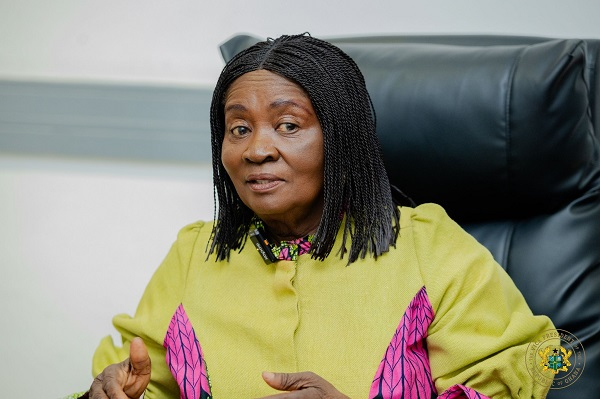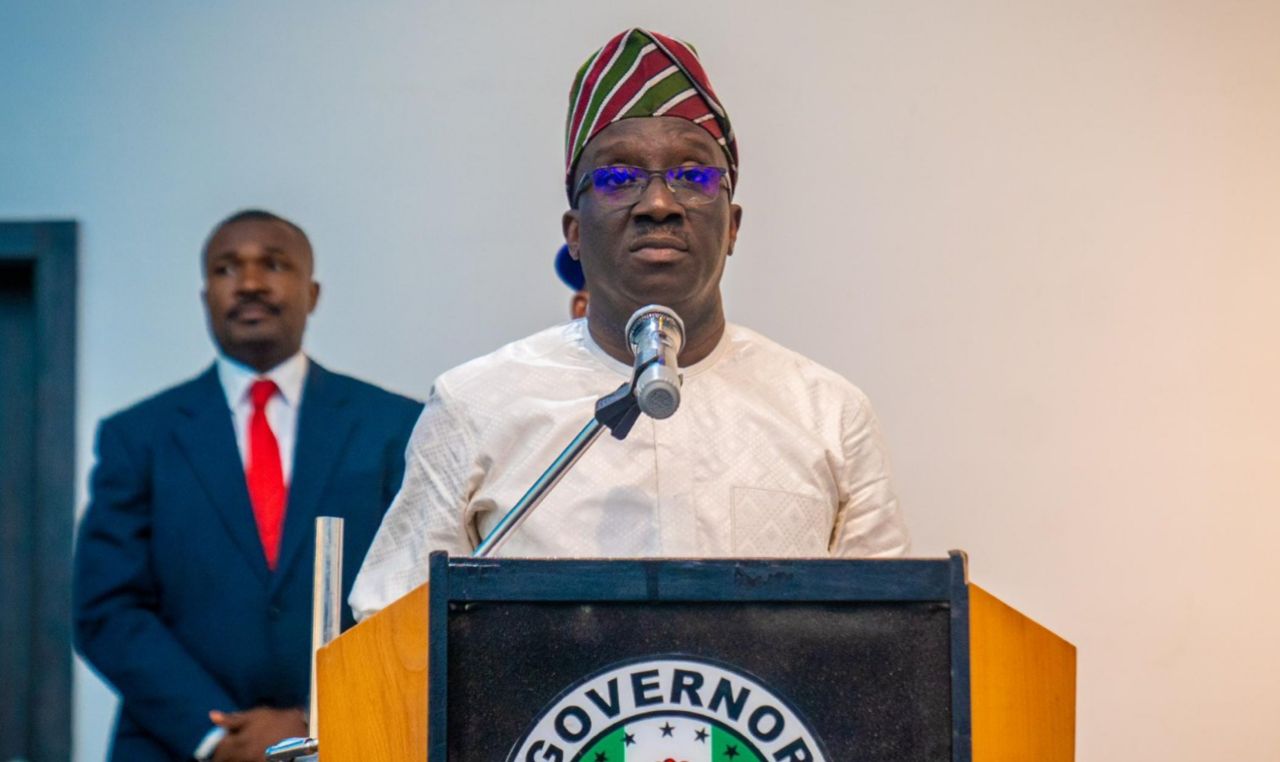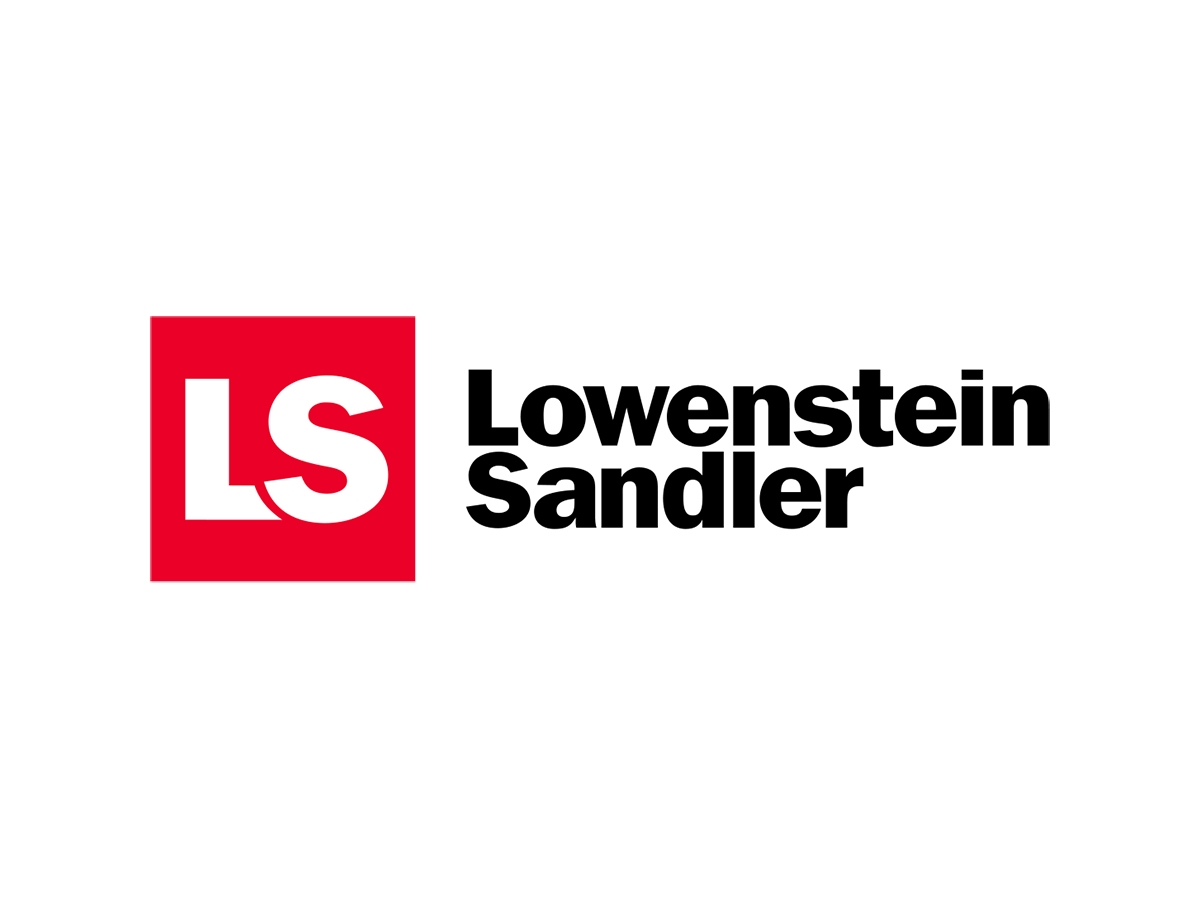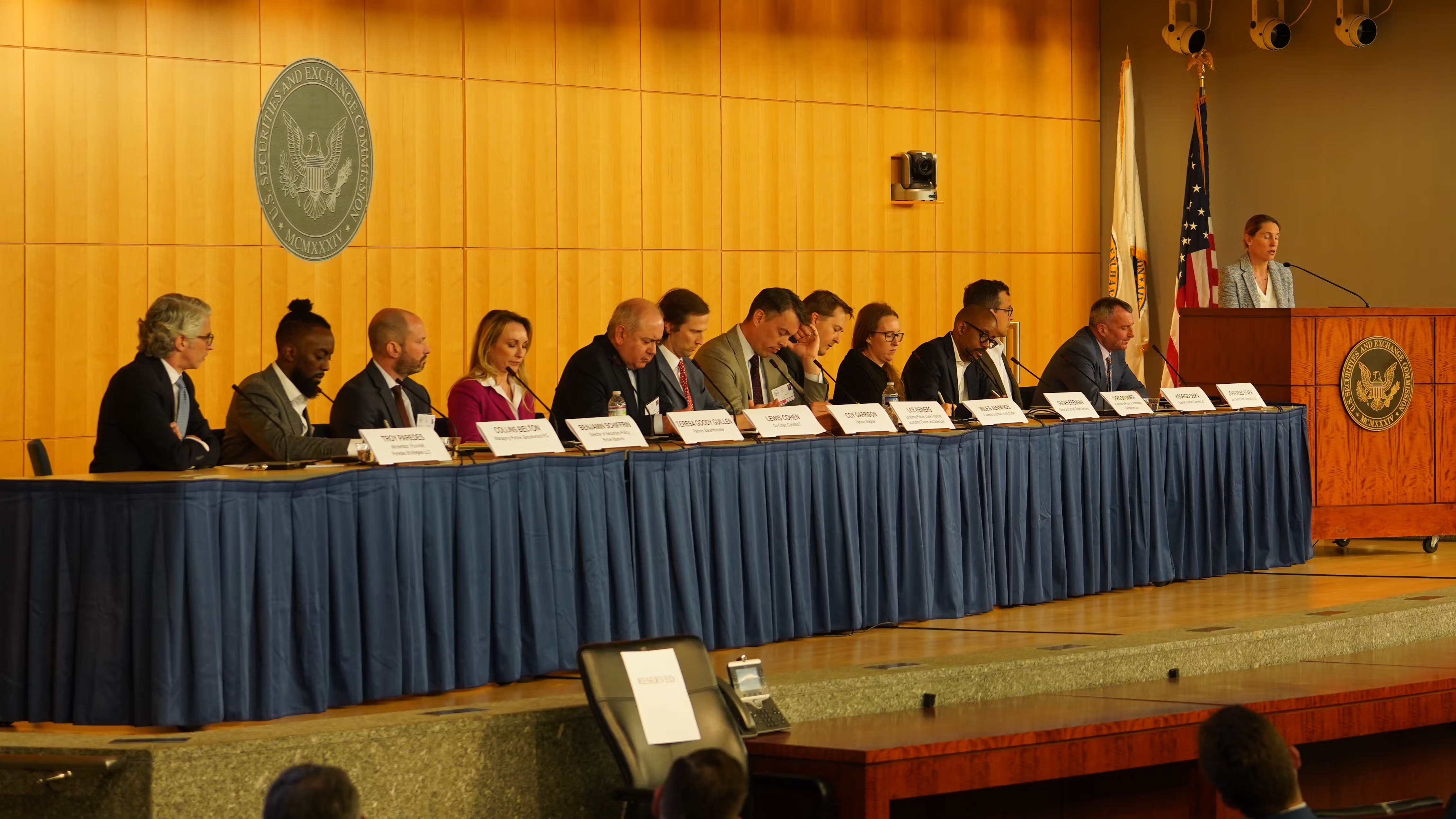Miles To Go: Remarks Before The Digital Chamber's 8th Annual DC Blockchain Summit, Commissioner Hester M. Peirce, Washington D.C., March 26, 2025
Thank you, Preston [Pysh], for that introduction. Before I begin, let me remind you that my views are my own as a Commissioner and not necessarily those of the SEC or my fellow Commissioners.
The poems of Robert Frost, born on this day in 1874, were among those that filled my childhood. I memorized “Stopping by Woods on a Snowy Evening,”[1] a poem about a traveler, accompanied only by his hesitant horse, stopping to admire the falling snow in the forest. Although lyrical verses of securities law have since largely displaced more traditional poetry in my mind’s cluttered recesses, the closing stanza of Frost’s poem hangs on:
The woods are lovely, dark and deep,
But I have promises to keep,
And miles to go before I sleep,
And miles to go before I sleep.[2]
Other Frost poems might better capture the season: spring’s flowers are upon us, and crypto winter has given way to a sometimes too ebullient season. Nevertheless, Frost’s desire to pause the journey to watch the falling snow cover the forest floor resonates with me; I would like the luxury of stopping for a moment or more to watch and think in quiet solitude about what a beautiful regulatory framework would look like. But I have promises to keep and miles to go before I sleep, so I am pondering in public, as the Commission and its staff are working on building the framework. I invite you to join us in determining how to get from regulatory desolation to a place where the crypto industry can blossom without the weeds of fraud, grift, and market manipulation.
Indeed, the public already has stepped up to assist in the task. The Crypto Task Force has had many helpful meetings with outside parties,[3] and we already have received approximately fifty thoughtful written submissions.[4] The Task Force’s first public roundtable last Friday was a productive conversation among thoughtful experts with varied views. Additional roundtables are on the schedule.[5] All of this engagement is extremely helpful, as we consider how the Commission and its staff can provide clarity about what is outside of our jurisdiction and practical compliance solutions for activities that are within our jurisdiction. For example, as the discussion at our recent roundtable highlighted, the Commission needs to think separately about transactions and assets that are the subject of transactions. Many crypto assets themselves are not securities, but primary offerings of crypto assets for capital raising purposes are securities transactions. Accordingly, staff is open to inquiries about how to conduct such offerings as either registered or exempt transactions. And the Task Force welcomes well-reasoned requests for no-action letters or exemptive relief that can be finalized quickly to allow activity to start soon. Lessons learned from these short- and medium-term efforts can inform longer-term regulatory and legislative efforts.
We also need to think now about the longer term and do so with open, inquisitive minds. What type of regulatory framework should Congress and the regulators be crafting? How do novel offering and trading technologies fit with our statutes? How can the transparency of the blockchain, the automated operation of smart contracts, and other aspects of crypto technology facilitate regulatory compliance? What new uses for crypto assets and the technology underlying them will emerge—including uses outside the financial realm, particularly once the securities label is not reflexively affixed to every crypto asset? Given all of these outstanding questions, in regulating financial crypto, we ought not be bound by the way we have long regulated existing financial markets. We should welcome the opportunity to reevaluate existing regulation in the light of these questions to ensure its appropriateness for both traditional and new markets.
The SEC and other regulators can provide technical advice and reflections such as those I offer today, but Congress—not implementing agencies—writes the statutes. Two market structure bills from the last Congress—the Financial Innovation and Technology for the 21st Century Act (“FIT21”), which passed the House,[6] and the Lummis-Gillibrand Responsible Financial Innovation Act, which was introduced in the Senate,[7] are informing work during this Congress. Under both approaches, the SEC and the CFTC, each of which has relevant experience, would have a role to play.
As a potential implementer of the legislative design who has lived through past implementation efforts involving multiple regulators, I cannot help but pay attention to jurisdictional questions. The jurisdictional status quo is a challenge. SEC, CFTC, FinCEN, FTC, OFAC, banking regulators, state regulators, FINRA, international regulators, and more play a role in crypto regulation. Overlapping jurisdiction can strain the brains, bank accounts, and briskness of both regulators and market participants. The overlap is likely only to get worse because crypto assets can represent anything from cash, to a financial instrument, like a security or a futures contract, to a work of precious art. As a result, many different regulators will have an interest in regulating crypto as it intersects with their jurisdiction. The risk of burdensome overlaps and conflicts is, therefore, real.
Congress can mitigate regulatory overload in a number of ways. First, as it seems inclined to do, Congress can work with existing regulators rather than creating a new one. Second, Congress can make clear that any new statute applies only domestically, which will focus U.S. regulatory resources on platforms set up in the United States—or reaching into the United States—to serve U.S. customers. Third, when interstate commerce is involved, as it clearly is here, Congress can preempt state regulation over areas covered by federal regulators to alleviate overlap with 50 state regulators. Fourth, to reduce regulatory uncertainty and the regulatory disputes that arise from such uncertainty, Congress can clearly assign jurisdiction over particular types of crypto assets to particular federal regulators. These four approaches to minimizing jurisdictional overlap are pretty straightforward.
Three other approaches for mitigating burdens in a crowded regulatory field are a bit more involved. The fifth way to mitigate burdens would permit flexibility relating to where crypto assets can trade. For this discussion, let us assume that, under new legislative authority, the CFTC will regulate platforms that trade either exclusively non-security crypto assets or a mix of non-security crypto assets and other instruments already regulated by the CFTC. Congress could make clear that a crypto asset sold in a primary transaction conducted pursuant, for example, to an SEC safe harbor, could trade on secondary markets on a CFTC crypto asset trading platform, unless the asset itself—apart from the investment contract—is a security.
While nothing in the SEC’s statutes or regulations currently prevents non-securities from trading alongside securities, some people might dispute the SEC’s authority to regulate transactions that have no security component, even if they occur on SEC-regulated platforms. Congress could expressly authorize exchanges and Alternative Trading Systems (“ATSs”) regulated by the SEC to trade non-security crypto assets and give the SEC explicit authority to regulate these transactions. Congress could ensure that the SEC’s regulatory and enforcement authority extended to all transactions occurring on one of its registered platforms. This approach would offer market participants the opportunity to decide where best to house their crypto asset trading activities and would dispel difficult operational questions about transitioning assets from one type of regulated platform to another. Customers would benefit, too, as SEC registrants could have integrated backends for all the crypto assets, securities and non-securities, that they make available to customers, potentially leading to increased efficiencies and lower costs for end-users.
A sixth way Congress could mitigate the burden of regulatory overlap is to apply lessons from the SEC’s and CFTC’s regulatory experience in traditional markets to the regulation of crypto assets and the platforms where they trade. We can draw on the principles that have guided SEC and CFTC regulation over the past decades, while making changes where appropriate to address the unique features and risks of these assets and to excise extraneous requirements that have accreted over the years without proportionate benefit for investors and markets. Crypto trading platforms could register as something more akin to an ATS than a national securities exchange. Principles-based regulation would give them broad latitude in making decisions about the products they offer for trading and how such products trade. Trading platforms would be able to serve retail customers directly. Customer protections could include proof of reserves and Exchange Act Rules 15c3-1 and 15c3-3 to protect custodied assets; allowance of atomic settlement to remove credit and counterparty risks; customer priority in bankruptcy and insolvency; information barriers and other protections to guard customer trading information from affiliates, employees, and other customers; electronic disclosure of transaction costs; and the provision of standardized, material information about crypto assets by the trading platform. Regulators would have the ability to monitor and examine trading platforms and bring enforcement actions for violations of customer protection rules, insider trading, and disclosure violations.
Finally, Congress can mitigate concerns about regulatory overlap and burden by safeguarding a basic American liberty—the right to transact with one’s peers. Protecting people’s ability freely to interact directly with one another, including through software, will provide a healthy check on regulatory accretion at centralized trading platforms and serve to acknowledge software developers’ First Amendment rights. Centralized intermediaries are not going away. Welcoming the entrepreneurs who are building to disintermediate and decentralize finance is consistent with fundamental American values. It also helps to appropriately calibrate regulation of centralized intermediaries; if regulation of centralized intermediaries is too heavy, too light, or simply not right, people will be able to use decentralized and disintermediated alternatives.
While this moment calls for us to think about crypto market structure, perhaps these discussions also will help us to rationalize the regulatory framework for our traditional equity markets that has grown in regulatorily micromanaged complexity over the last ninety years. Blockchain technology might even be an agent in that streamlining initiative. But I will save those musings for a subsequent journey when there is time to stop and think in the quiet solitude of an ivory tower. As I mentioned at the outset, the task at hand requires greater alacrity and less solitude. Although we have some hard miles ahead in our journey, together we can make rapid progress. A well-crafted regulatory edifice lies just on the other side of the forest.
[1] Robert Frost, “Stopping by Woods on a Snowy Evening,” The Poetry of Robert Frost (ed. Edward Connery Lathem 1923), available at https://www.poetryfoundation.org/poems/42891/stopping-by-woods-on-a-snowy-evening.
[3] U.S. Securities and Exchange Commission, Crypto Task Force Meetings, available at https://www.sec.gov/about/crypto-task-force/crypto-task-force-meeting-logs
[4] U.S. Securities and Exchange Commission, Crypto Task Force Written Input, available at https://www.sec.gov/about/crypto-task-force/crypto-task-force-written-input.
[5] U.S. Securities and Exchange Commission, Press Release, SEC Crypto Task Force To Host Four More Roundtables (Mar. 25, 2025), available at https://www.sec.gov/newsroom/press-releases/2025-57.
[6] H.R. 4763, Financial Innovation and Technology for the 21st Century Act (118th Cong. 2023-24), available at https://www.congress.gov/bill/118th-congress/house-bill/4763/text?s=1&r=1&q=%7B%22search%22%3A%5B%22Financial+Innovation+and+Technology+for+the+21st+Century+Act.%22%5D%7D.
[7] S.2281, Lummis-Gillibrand Responsible Financial Innovation Act (118th Cong. 2023-24), available at https://www.congress.gov/bill/118th-congress/senate-bill/2281/text.










